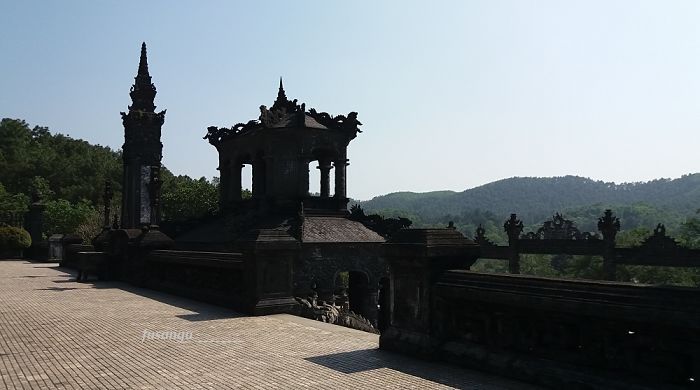
A canonical one-day visit is what most people opt for when it comes to visiting Hue. The city is often regarded as a mere stop along the journey between Hoi An and Hanoi. We suggest devoting to Hue two full days but even an additional half-day makes for a great improvement.
In this page we detail a programme suitable for 36-hour visit to Hue. The programme is particularly suitable to those who take their time to travel slowly.
Hue 1,5-day itinerary
Hue was the capital of Vietnam during the reign of the Nguyen dynasty. The city is famous for the citadel, the tombs and a few historical temples. In 36 hours it is possible to visit the most impressive sights without having to go through a tour-de-force.
Itinerary: Citadel, Nguyen tombs, main temples
Hue’s city centre was ravaged during the last war. Staying in the centre provides with a convenient location, which is a plus for such a short stay.
|
Hue 1,5-day itinerary Citadel, Nguyen tombs, historic temples Evening arrival |
|
|
Where to stay |
City centre, near the Perfume River |
|
Day 1 |
Destinations:
How to get around:
|
|
Day 2 (morning) |
Destinations:
How to get around:
|
Morning arrival
If you reach Hue by noon, we suggest you devote the whole afternoon to the visit of the Citadel. You can then enjoy the sunset at the Thien Mu Temple (which you can also visit on the next day at dawn).
Related articles:
First journey to Vietnam: suggested 2-week itinerary
Other destinations:
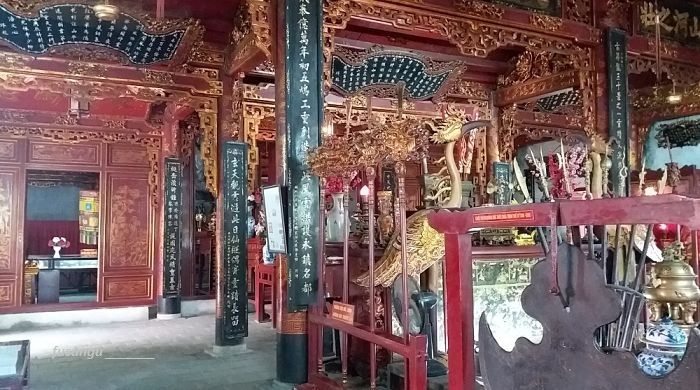
The capital of Vietnam is rich in temples, places of cultural and historical interest, museums and interesting neighbourhoods. While even four days would not be enough to visit the most important destinations, most visitors dedicate to Hanoi far less time, typically the few hours that separate the excursions to Sa Pa and Ha Long Bay.
In this page we detail a programme suitable for 36-hour itinerary. Focused on the city centre, the programme is very suitable to the first visit to Hanoi.
Hanoi 1,5-day itinerary
Hanoi is the capital of Vietnam and a city rich in cultural heritage and historical landmarks. The city is one of the few capitals of Eastern Asia that largely retains an atmosphere that evokes traditions and modes of living rooted in the past.
For a short visit, the city centre is the only ambit you should consider for your visit. Outside of the central Hoan Kiem District you can choose to visit the sites around Ba Dinh Square and the Temple of Literature.
Itinerary: Hoan Kiem Lake, Old Quarter, Ba Dinh, Temple of Literature
Finding a hotel near Hoan Kiem Lake is by far the best possible choice for such a short stay. The area offers different contexts; from the elegance of the affluent French Quarter (east of the lake) to the more typically local atmosphere of the surroundings of Saint Joseph Cathedral. North of the lake lies the bustling Old Quarter, an interesting but chaotic neighbourhood.
|
Hanoi 1,5-day itinerary Hoan Kiem Lake, Old Quarter, Ba Dinh, Temple of Literature Evening arrival |
|
|
Where to stay |
Hoan Kiem |
|
Day 1 |
Destinations:
Other options: Vietnam Museum of Military History
How to get around:
|
|
Day 2 (morning) |
Destinations:
How to get around:
|
Morning arrival
If you reach Hanoi by noon, we suggest you leave your baggage at the hotel and begin your journey right away. We suggest you begin your visit from Hoan Kiem Lake and follow the schedule above.
Related articles:
First journey to Vietnam: suggested 2-week itinerary
Other destinations:
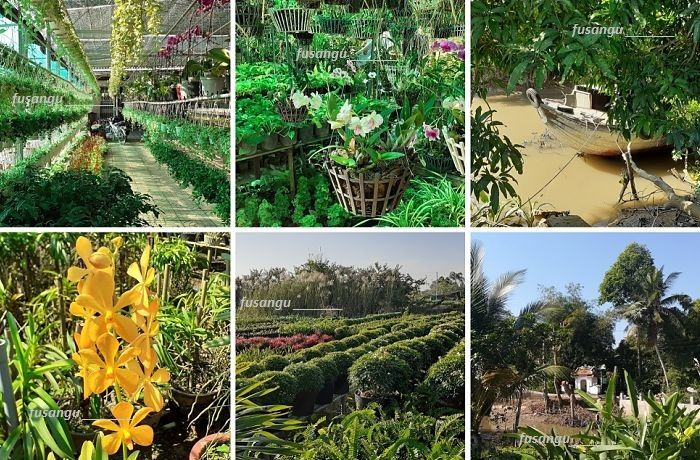
Between Vinh Long and Can Tho, along a wide branch of the Mekong River is Sa Dec, major rural centre and busy port.
The small city is renowned for the abundant production of flowers and ornamental plants. In the quaint and placid atmosphere of the area you can find a few remnants of the past, in the shape of old houses and temples.
Sa Dec is a destination of great interest to those who want to escape the usual hasty 1-2 day tours. The life in Mekong Delta region here still seems to flow slowly and peacefully.
Two days in Sa Dec: suggested programme
A half-day is enough to see the main sightseeing places of Sa Dec. Those who come here will definitely enjoy exploring the countryside surrounding the city. Sa Dec is an ideal starting point for short itineraries between Vinh Long, Can Tho and Ben Tre.
Day 1 - Sa Dec city centre
The city is most famous for its floral market. Located in the northern periphery of the city, the market covers a large residential areas. Narrow canals separate the ubiquitous fields. Most of them are guarded by the homes of their owners as cultivation here is mainly a family activity.
We assume that you reach the city around noon, which is often the case if you move from Ho Chi Minh City, Can Tho, Ben Tre or Chau Doc.
Sa Dec Flower Village
The flower village, full of greenhouses, fields, picturesque houses and cafes is worth a visit at any time of the year but it is particularly busy and colourful 2 to 3 weeks earlier than Tet, the Vietnamese lunisolar New Year.
Apart from the spectacle of colours and fragrances, visitors can appreciate the local mode of living. Houses, small ancestral altars and tombs amid fields near the river. The key elements of the spiritual and material universe of the individuals are visible in full harmony.
House of Huynh Thuy Le
Dating back to the XIX century, the small ornate house belonged to a wealthy Chinese family. The house was used as set for the movie “The Lover” by Annaud.
The building is an original mixture of local and western architecture.
Kien An Cung
Near the Huynh Thuy Le House is Kien An Cung, a beautiful Chinese temple endowed with rich decorations.
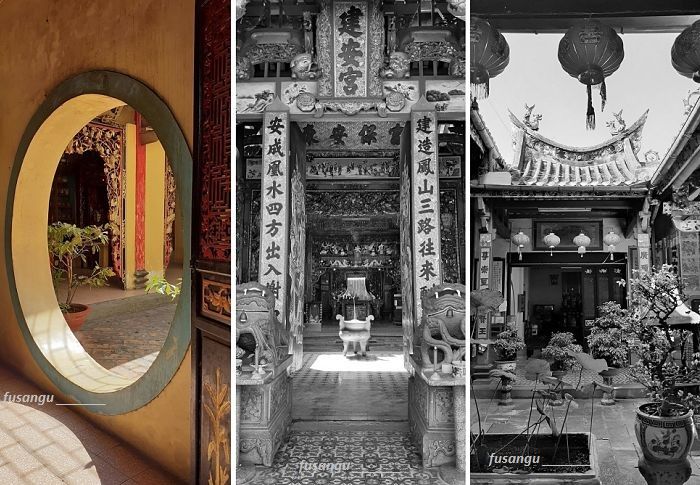
Other sightseeing places
In the city centre are quite a few temples and pagodas. Some of them are relatively old and worth a visit. They can all be reached on foot.
Along the river, not far from the House of Huynh Thuy Le is the food market, bustling and colourful as are most markets in Vietnam.
Day 2 - Surroundings
Sa Dec is at the centre of a beautiful rural area where you can enjoy the serenity of the Mekong Delta region.
Not far from Sa Dec, at a distance of less than 30-50 km are a few places that are well worth a visit.
Dong Thap province 1-day itinerary:
-
1) Tram Chim National Park or Go Thap archaeological site and Xeo Quyt Forest;
-
2) Visit to An Binh Island and Vinh Long.
Dong Thap province
Dong Thap province lies in the heart of the Mekong Delta region. As long as you avoid the main highways and roads, the whole area offers plenty of opportunities for pleasant tours by motorbike.
We suggest that you visit the locality of Go Thap. Here you can see large lotus ponds. Over them are family-run inns and restaurants that offer glimpses of the local lifestyle. In the area is an archaeological site with few vestiges of the mysterious Kingdom of Funan.
If you want to get an idea of what it meant to be a Viet-Cong, do not miss out on a visit to Xeo Quyt Forest. Amid the impressive deep jungle are a few bunkers and installations used by combatants during the last conflict.
Related articles:
First journey to Vietnam: suggested 2-week itinerary
Other destinations in the region:
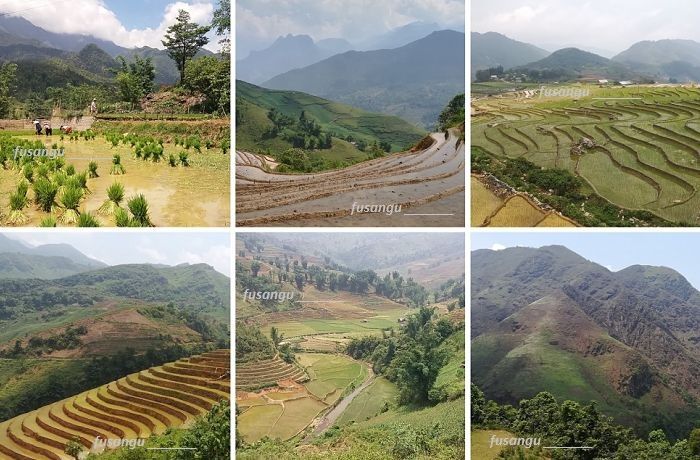
Sa Pa is a popular tourist destination located in the heart of the mountainous region of Northern Vietnam. While the town is rather ugly and has little to offer, it serves as an excellent base to visit the magnificent province of Lao Cai.
Quaint and picturesque villages, the idyllic atmosphere of remote valleys, imposing mountains, vivid and vibrant colours of forests and rice paddies are only some of the reasons who draw large crowds of tourists to this area.
In this page we outline a programme for a 3-day visit to Sa Pa and its surroundings. A classic, often proposed by travel agencies, this itinerary is also suitable for independent travellers.
Day 1 – Sa Pa
Sa Pa is a small town at the centre of a region of outstanding natural beauty. It lies in Lao Cai Province, not far from the border with Lai Chau Province.
The city itself has turned into everything that mass tourism should be despised and feared for. A fake, artificial environment that caters to meet basic needs of the cosmopolitan non-cultural world.
The region, inhabited by communities, different to the prevalent Kinh (Viet) ethnic group, is a mosaic of cultural and natural landscapes. Rice paddies adorn valleys and mountains with their hypnotic patterns, small houses retain the shapes and features of the old architecture, life flows slowly in accordance to the rhythm of seasonal changes. You can experience all this only if you get out of the tourist paths or at least venture a bit further away.
Guided tours allow to grasp sights of the life in the villages near Sa Pa. These villages are mostly inhabited by H’mong and Dao communities. A classic half-day tour includes visits to Lao Chai and Ta Van, the first villages you encounter when you explore the Valley of Muong Hoa.
Day 2 – Ma Tra, Ta Phin
The next day you can visit Ma Tra and Ta Phin villages. Located north of Sa Pa, they are among the most picturesque and least spoilt landscapes of Sa Pa’s area.
Tours normally include a visit to a local house, basic introduction the customs and aspects of the local culture as well as some simple hands-on activities.
Day 3 – Mount Fansipan
With its 3.143 metres of altitude, Fansipan (Phan Xi Pang) is the highest mountain in Vietnam and whole Indochina.
A cable car now connects Sa Pa to its summit but if you are a keen hiker you should not miss the chance of ascending the mountain.
As the paths are quite dangerous and weather changes very quickly, independent ascending of Fansipan has been made illegal and the authorities strictly and zealously enforce the ban.
One day is too little time to complete the ascent and descent. Enquire with a tour agency that offers one-day tour. You can reach the summit on foot and get back to Sa Pa by cable car.
Hiking on Fansipan requires a fit condition, experience and readiness to face difficulties and discomfort.
From Hanoi to Sa Pa
Time is very limited so it is best to reach Sa Pa overnight. You can either take a train to Lao Cai and transfer to Sa Pa by local shuttle bus or travel exclusively by night bus.
Buses leaving at 22:00 reach Sa Pa around 6:00. The ride costs 250.000-350.000 dong depending on the service level.
Where to stay in Sa Pa
The town of Sa Pa itself has very little to offer. The centre is a a large cluster of rather ugly modern buildings, mainly occupied by hotels and restaurants.
While in most towns and cities the effects of rapidly rising mass tourism have generally be restricted to small tourist quarters, here the whole town seems to have no other sense and vocation but to cater for tourists. A similar experience cannot even be had in Da Lat.
Staying in the city centre is reasonable only if you look for a high-end accommodation solution or for practical purposes, such as being close to the bus station if you need to leave early in the morning.
Staying at a local guest house in one of the villages located south of Sa Pa is the best way to experience the local culture. Note that this solution has become very popular and as a consequence you will not be able to completely escape the profound alterations brought about by mass tourism.
If you really wish to find that idyllic beauty and sense of remoteness that the imposing landscape commands, you need to proceed further southwards.
Related articles:
First journey to Vietnam: suggested 2-week itinerary
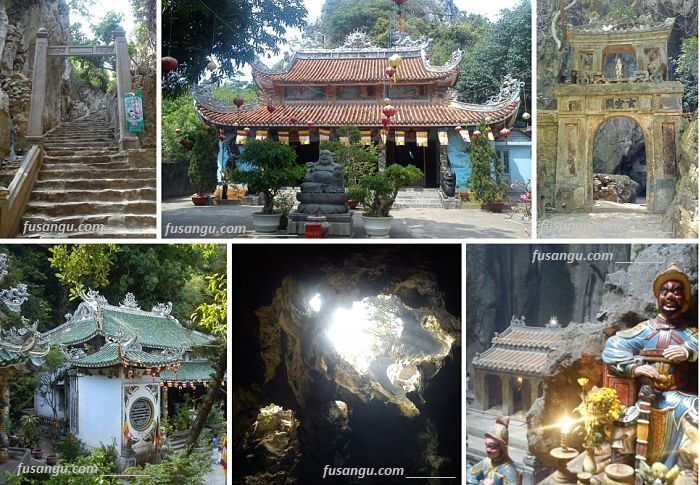
Three days allow to visit well Hoi An and its surroundings. Hoi An is a quiet and pleasant little town where it is enjoyable to spend some days and relax.
There is plenty of opportunities for side trips and interesting itineraries in the area.
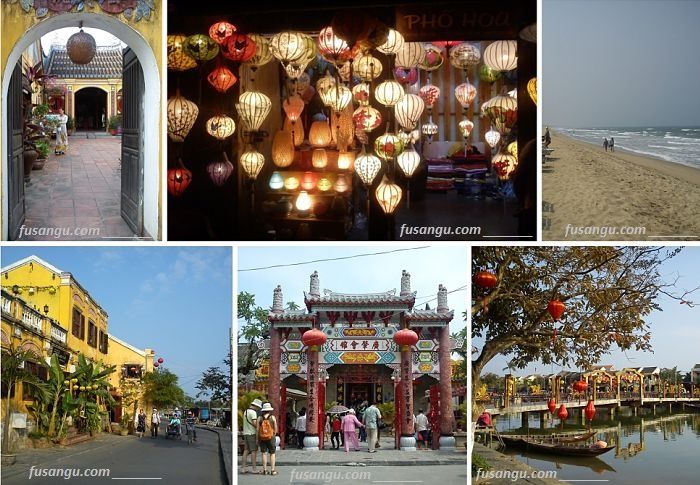
Hoi An 3-day itinerary: suggested programme
Hoi An is a small town but it offers plenty of choice as to what to do and see. Moreover, in its vicinity are numerous destinations of tourist interest. This, coupled with the pleasant atmosphere of its rural context, makes Hoi An a perfect place where to enjoy slow travelling.
Day 1: Hoi An historic centre
The first contact with Hoi An can simply be a relaxing walk in the centre. Hoi An historic centre is unique in Vietnam. No other city in the country can boast such a beautiful and well-preserved historic centre. From traditional local houses to colonial buildings, the area is a fascinating blend of tangible heritage that displays influences from Chinese, Japanese and local architecture.
Many of Hoi An’s most beautiful architectures are found along Tran Phu and Bach Dang streets. These are the most touristy places but if you cannot stand the crowds, a simple turn into a backstreet will immediately project you into a totally different dimension, that peaceful, quiet, atmospheric old town where time flows slowly.
If you cannot wait and want to exploit the little time available, you can immediately add a few cultural visits, such as Hoi An Ceramics Trade Museum or one of the sino-vietnamese halls.
If you want to see the ordinary non-touristy town, just cross the Thu Bon River and wander in Cam Nam Island.
Do not forget to purchase the tourist tickets (120.000 dong). Each allows you entrance to five sightseeing spots. We suggest you buy two tickets. Ticket offices are in the old town, near Quan Cong Temple and near the Japanese Bridge.
Day 2 – Temples, sino-vietnamese assembly halls, museums
A day is enough to see a significant part of Hoi An’s cultural heritage. We suggest you choose the following sites:
-
1) A historic pagoda;
-
2) A Taoist temple;
-
3) One or two assembly halls;
-
4) One or two ancient houses.
We suggest you start your sightseeing day very early, so as to have the chance of seeing Hoi An in peace and tranquillity. In this way you can also find time to have a siesta around noon, a time when the heat can become unbearable.
Minh An
Hoi An at dawn is still the quaint and adorable city that it used to be. The streets are quiet and the sights will not be ruined by cheap and out-of-place merchandise. This is the only time when you can really appreciate the old architecture, distinguish the different styles and notice decorations and features you will most certainly miss amid the confusion.
Japanese Bridge, Canton Assembly Hall, Phung Hung Old House
Very close to each other are three of Hoi An’s most famous architectures: the Japanese Bridge, Canton Assembly Hall, Phung Hung House (Chua Cau, Hoi Quan Quang Dong and Nha Co Phung Hung).
What is known under the name of Japanese Bridge is a small temple (Chua Cau, “Bridge Temple”). The tiny place of worship is found on a room built on a masonry bridge covered by a richly decorated tile roof. As you can imagine, the temple was found by the local Japanese community.
A beautiful sight encompassing the bridge can be had from the upper floor of Phung Hung Ancient House. The beautiful two-storey building served as residence and shop for an affluent family of merchants. The wooden structures and the furniture are particularly elegant.
A few steps towards east will lead to the Cantonese Assembly Hall (Hoi Quan Quang Dong). A Taoist temple, it serves as meeting point and social venue for the sizeable Chinese community hailing from GuangDong Province.
Bach Dang, Tan Ky Old House, Fujian Assembly Hall
Many beautiful colonial period houses are lined along Duong Bach Dang, the northern embankment of the Thu Bon River.
As you move from the Cantonese Assembly Hall you will immediately spot Tan Ky Ancient House. This is a very beautiful merchant house with a central yard. The house is marked by a board with Chinese characters. The building is a unique combination of Vietnamese, Chinese and Japanese architectural stylemes.
Once you have reached the Hoi An Market, spend so time wandering inside and outside the large building. Do not forget to taste the local fruits, delicious and healthy.
You can then proceed towards Tran Phu and visit Quan Cong Temple, place of worship devoted to the mythical Chinese general and the small and atmospheric Quan Am Pagoda.
Moving westwards along Tran Phu, the most touristy street in Hoi An, are many cultural sightseeing spots. We suggest you take some time to visit the Fujian Assembly Hall, the largest and most impressive hoa assembly hall in the city. The decorations of the roof are the most recognizable mark of Fujian sacred architecture.
Activities
Hoi An is a small city and it is easy to get around in its surroundings. Therefore there is plenty of choice as to how spend the afternoon. We suggest choosing among the following options:
-
Visiting HaiNan and ChaoZhou Assembly Halls and stroll along the Thu Bon in Cam Nam Island;
-
Cycling in Cam Chau and Cam Thanh, beautiful countryside localities just east of the centre;
-
Relaxing on the beach in An Bang or Cua Dai, beaches along the northern coast (between March and September);
-
Visiting Marble Mountains, a Buddhist religious site nestled in a group of small hills between Hoi An and Da Nang. You can also add a visit to Da Nang’s Cham Sculpture Museum if you plan to visit My Son the next day.
Day 3 – Visit to My Son Sanctuary
Southern and Central Vietnam were previously part of the Kingdom of Champa. Its population, probably of Javanese origin, used to practise Hinduism. With the push towards south of the Kinh (the ethnic Vietnamese) the Champa gradually lost territory and their state collapsed.
Many temples and vestiges of the Cham Kingdom can be found today, especially in Ninh Thuan and Binh Dinh provinces but no site reaches the beauty and importance of My Son Sanctuary.
At a distance of 30 km from Hoi An, it makes for a perfect half-day trip from the city. The visit also allows you to have a glimpse of the countryside landscapes in Quang Nam Province.
The sanctuary lies in a basin covered by a thick jungle. Rivers cross the valley, surrounded by mountains on three sides. The choice of the site was made as to follow precise cosmological notions.
The religious site, the spiritual centre of the Kingdom of Champa, comprised a large number of temples of outstanding size and artistic value. Aside from their beauty, the visitor will be impressed by the symbiotic relation between architecture and environment.
Nowadays only a small part of the ancient complex is standing. Tremendous damage was inflicted by a bombing occurred during the Vietnam War, supposedly, because Viet Cong were hiding in the valley.
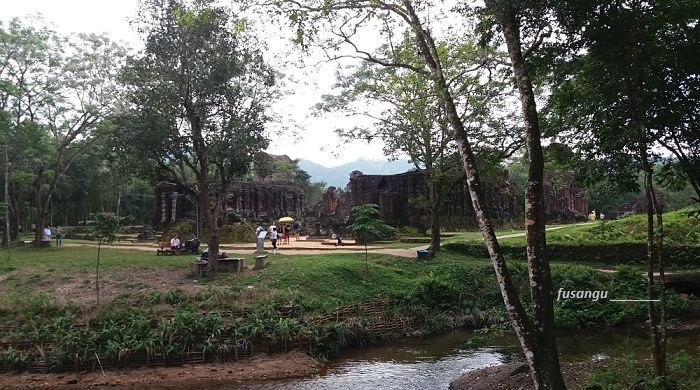
Visit to Marble Mountains
If you want to visit another religious site you can get back to Hoi An and reach the Marble Mountains.
Otherwise you can choose among the options listed in the previous paragraph or just relax in Hoi An.
Where to stay in Hoi An
Even if Hoi An is a small city, when choosing where to stay you should pay some attention. First of all, be aware that there is plenty of accommodation for any budget.
As time is limited, you may want to base yourself not far from the centre. Getting around by taxi is cheap but you can also use a bicycle (most hotels and guest houses offer them for free).
For a 2-4 day stay like in this case, we suggest you choose among the centre and Cam Chau. .
These are the best options:
-
Minh An, in the heart of the historic town, arguably the most fascinating part of Hoi An;
-
Cam Chau, between the historic centre and the northern beaches, ideal location if you want to explore the countryside and get off the beaten tracks.
Related articles:
First journey to Vietnam: suggested 2-week itinerary
Page 2 of 4

